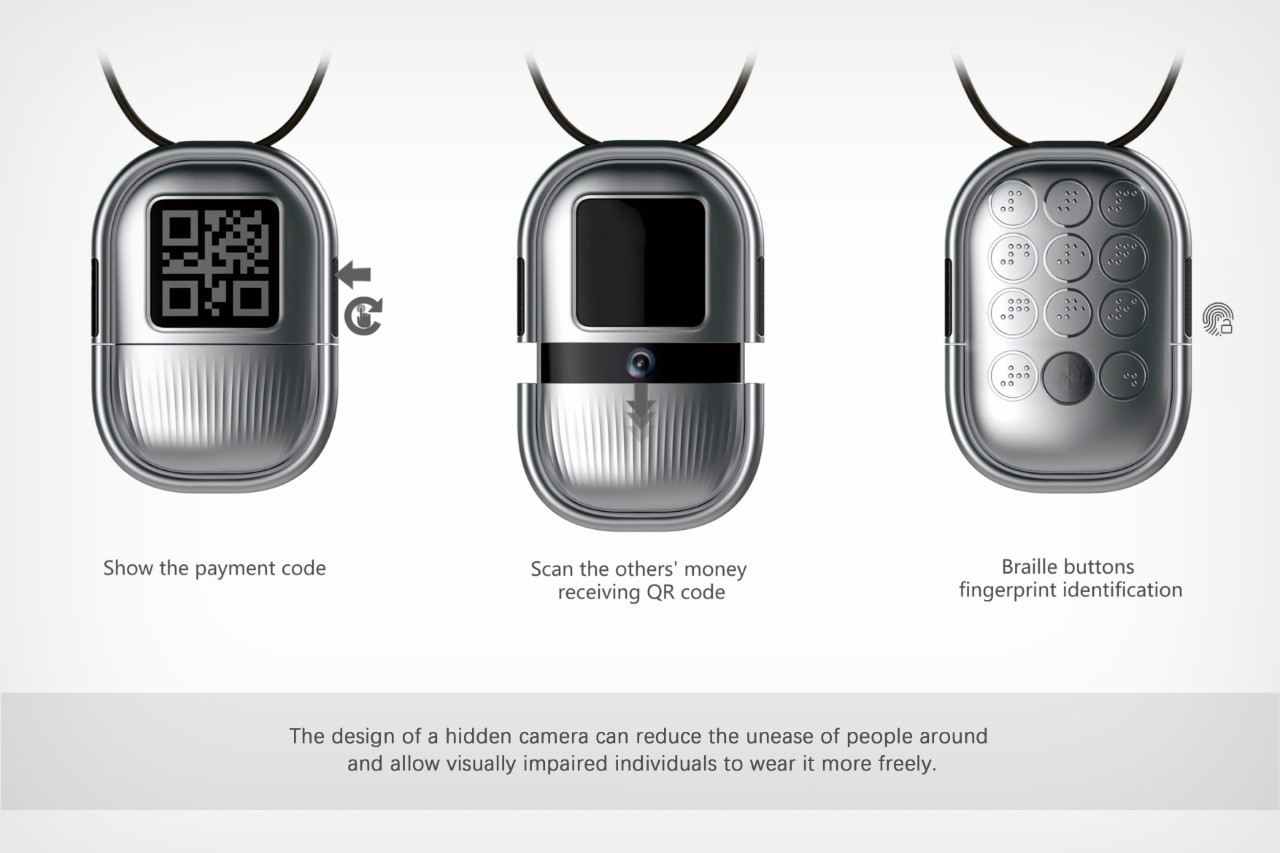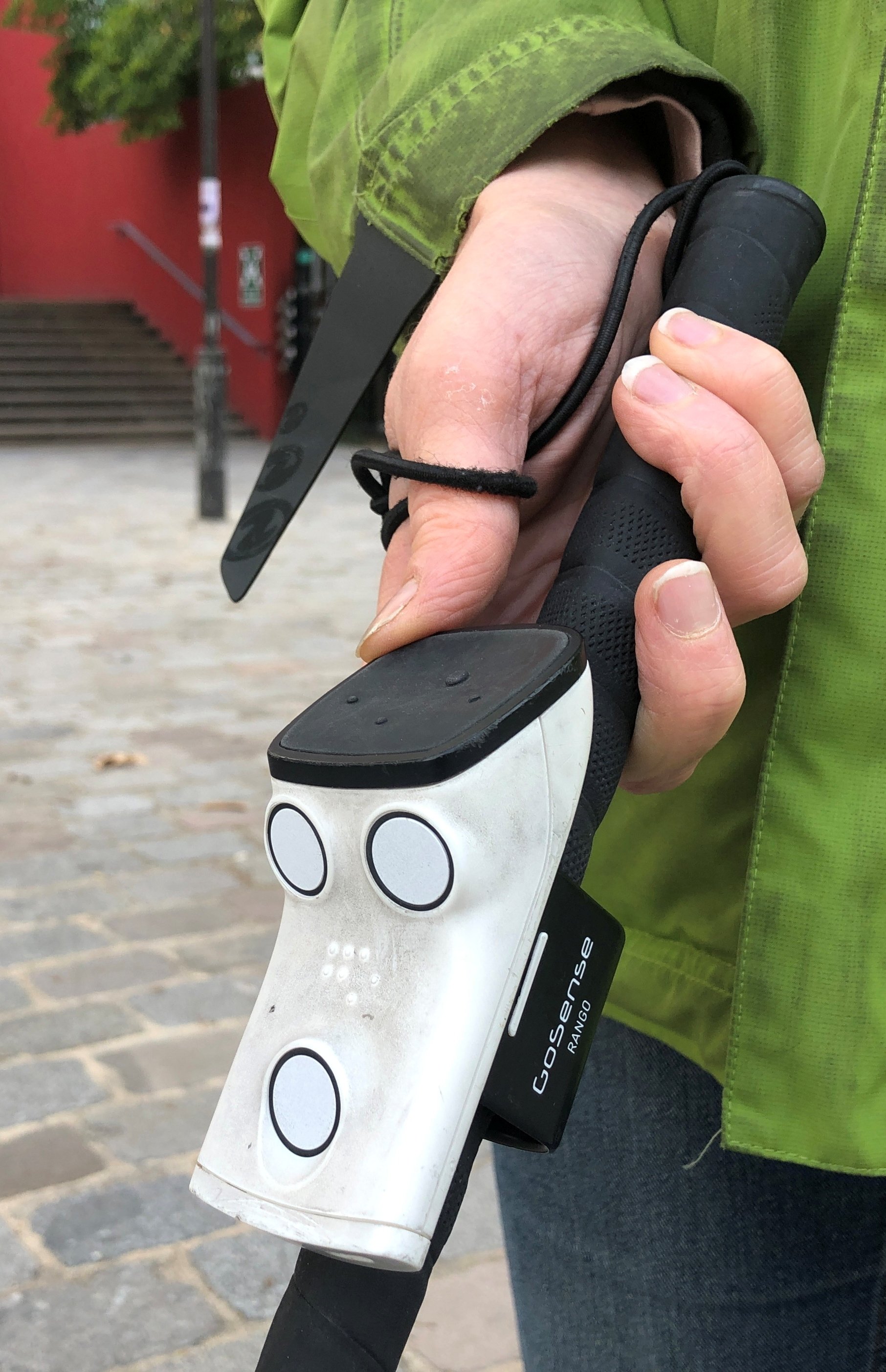Discover Innovative Devices Designed for the Aesthetically Damaged
The growth of cutting-edge tools for the aesthetically impaired represents a considerable innovation in accessibility and self-reliance. Technologies such as smart glasses with AI capacities and mobile applications made to give auditory summaries are reshaping daily experiences for users. Furthermore, wearable devices that use haptic feedback enhance ecological understanding, while modern Braille advancements use brand-new methods to engage with message. As these tools remain to advance, their influence on the lives of those with visual impairments raises important inquiries regarding the future of inclusivity and freedom in different facets of life. What exists ahead in this technological landscape?
Smart Glasses for Navigating

Smart glasses developed for navigation are reinventing the way aesthetically impaired individuals connect with their environment. These sophisticated gadgets use a mix of video camera innovation, artificial intelligence, and auditory feedback to supply real-time details concerning surroundings. By using barrier discovery systems, clever glasses can signal users to possible risks, allowing more secure wheelchair in both familiar and unfamiliar setups.
The combination of GPS modern technology better enhances navigation capacities, enabling users to obtain auditory instructions as they move. This hands-free technique not just cultivates independence yet likewise encourages visually damaged individuals to browse city landscapes with raised confidence. In addition, many smart glasses are outfitted with attributes that determine landmarks and street indicators, providing contextual info that improves the customer experience.
Moreover, the development of these devices is continually advancing, with business working to enhance the accuracy of item acknowledgment and increase the series of navigational features. As smart glasses come to be extra inexpensive and easily accessible, they hold the prospective to significantly change day-to-day live for visually impaired individuals. Eventually, these cutting-edge devices represent a crucial action towards inclusivity, offering improved wheelchair and a better sense of autonomy for people browsing the world around them.

Mobile Application for Daily Living
How can mobile applications improve the lives of visually impaired people? Mobile apps are reinventing the way visually damaged individuals browse their environments, manage day-to-day tasks, and gain access to info. These applications supply vital assistance via various capabilities, cultivating independence and boosting lifestyle.
Several cutting-edge mobile applications are created specifically for day-to-day living. Applications like Be My Eyes connect aesthetically impaired users with sighted volunteers through video phone calls, permitting them to get real-time support with tasks such as reading tags or browsing unfamiliar areas. In A Similar Way, Seeing AI, established by Microsoft, uses expert system to describe environments, checked out message, and identify items, successfully transforming a mobile phone into an effective tool for daily assistance.
Furthermore, navigation applications customized for the aesthetically damaged, such as Aira and BlindSquare, use audio-based instructions and ecological info, enabling customers to traverse their surroundings safely and with confidence. Beyond navigation and prompt aid, mobile apps also support company and task management, with features that aid individuals set pointers, develop to-do lists, and track consultations. In recap, mobile applications work as essential sources, encouraging aesthetically damaged individuals to lead more independent and satisfying lives.
Wearable Technologies for Assistance
Empowerment through innovation is progressively obvious in the realm of wearable gadgets made to help aesthetically official site impaired people. These cutting-edge devices integrate seamlessly right into day-to-day live, improving navigation and giving important comments to individuals. For instance, smart glasses equipped with electronic cameras can review and recognize faces text out loud, permitting customers to connect even more with confidence in social and professional settings.
One more significant innovation is making use of haptic responses systems in wearable tools. These systems utilize vibrations or various other tactile signals to convey information concerning the individual's setting, such as barriers or modifications in terrain, enhancing wheelchair and safety and security. Wearable technologies also consist of wristbands that attach to smart devices, alerting customers to alerts through subtle resonances, thus boosting connectivity without reliance on visual hints.
As these modern technologies remain to develop, they are not only improving freedom for aesthetically damaged individuals but additionally promoting a higher sense of incorporation in culture. By connecting the void between difficulties encountered in daily living and the possibility for freedom, wearable innovations function as pivotal tools in the mission for equality and empowerment for those with aesthetic disabilities.
Audio Description Tools
Sound summary tools play an important duty in boosting access for aesthetically impaired individuals, giving them with the capacity to involve with aesthetic media. Smart glasses for the visually impaired. These tools use narrated descriptions of crucial visual components in movies, television programs, and live performances, making sure that individuals can fully understand the context and feelings shared with visuals
Audio summary can be incorporated right into numerous systems, including streaming services, cinema screenings, and live cinema. Lots of popular streaming services now consist of audio description as an availability feature, enabling visitors to select it conveniently. In addition to traditional media, specialized apps also exist, supplying audio descriptions for art events, museums, and various other cultural occasions.
The performance of audio summary depends upon the skill of the narrators, who should share visual details succinctly without diminishing the initial audio. Innovations in this area are additionally leading the way for even more tailored experiences, where customers can readjust the degree of information and pacing according to their choices.
Braille Innovations and Instruments
Braille technologies and tools have substantially changed the way visually damaged individuals communicate with text and details. Modern advancements have actually brought about the development of versatile devices that boost literacy and self-reliance amongst individuals. Notably, Braille display technologies have evolved, permitting vibrant reading experiences. These gadgets convert electronic text right into Extra resources Braille, making it possible for customers to access a huge array of details on smart devices, computer systems, and tablets.
Moreover, portable Braille notetakers combine traditional Braille input with modern performances, helping with note-taking, organizing, and paper editing on the go. Voice-activated assistive devices. These small devices often include text-to-speech visit this site capabilities, connecting the space in between Braille and acoustic information
In addition, ingenious Braille printers have actually arised, allowing customers to produce Braille labels, documents, and instructional products successfully. This access cultivates greater engagement in educational and expert environments, inevitably advertising inclusivity.
Moreover, research study into smart Braille technologies remains to broaden. Devices that integrate man-made knowledge are being discovered to offer real-time navigating aid and contextual information, improving the individual experience in varied setups. In general, these innovations mirror a commitment to equipping aesthetically impaired people through modern technology, guaranteeing they can quickly gain access to and involve with the world around them.

Verdict
The development of cutting-edge tools for the visually impaired substantially boosts self-reliance and top quality of life. Smart glasses, mobile applications, wearable technologies, audio description tools, and Braille developments jointly equip individuals by offering necessary navigating help, environmental understanding, and enhanced reading experiences. These technologies not only foster greater addition but also advertise autonomy in daily tasks, inevitably contributing to a much more equitable and accessible society for aesthetically impaired people. Continued growth in this field holds pledge for additional enhancements.
As clever glasses become much more budget-friendly and accessible, they hold the potential to considerably change everyday life for visually damaged individuals. Mobile apps are transforming the means aesthetically impaired users browse their settings, take care of day-to-day tasks, and gain access to details. Applications like Be My Eyes attach aesthetically damaged individuals with sighted volunteers via video clip calls, permitting them to obtain real-time support with tasks such as checking out labels or browsing strange rooms.Additionally, navigating applications tailored for the visually impaired, such as Aira and BlindSquare, provide audio-based instructions and environmental details, allowing individuals to traverse their surroundings securely and confidently.The advancement of ingenious devices for the aesthetically impaired substantially boosts freedom and top quality of life.
Comments on “Portable Technology for Low Vision: A Breakthrough in Accessibility”